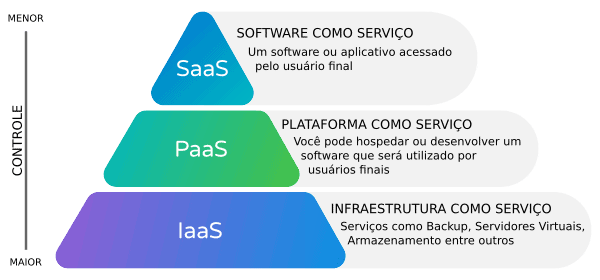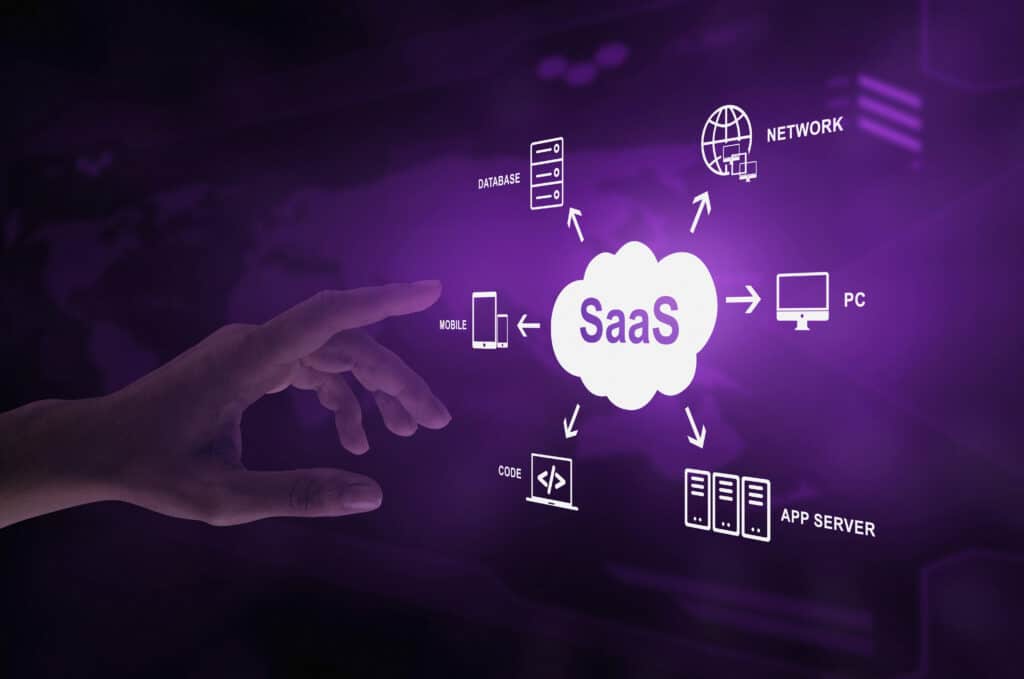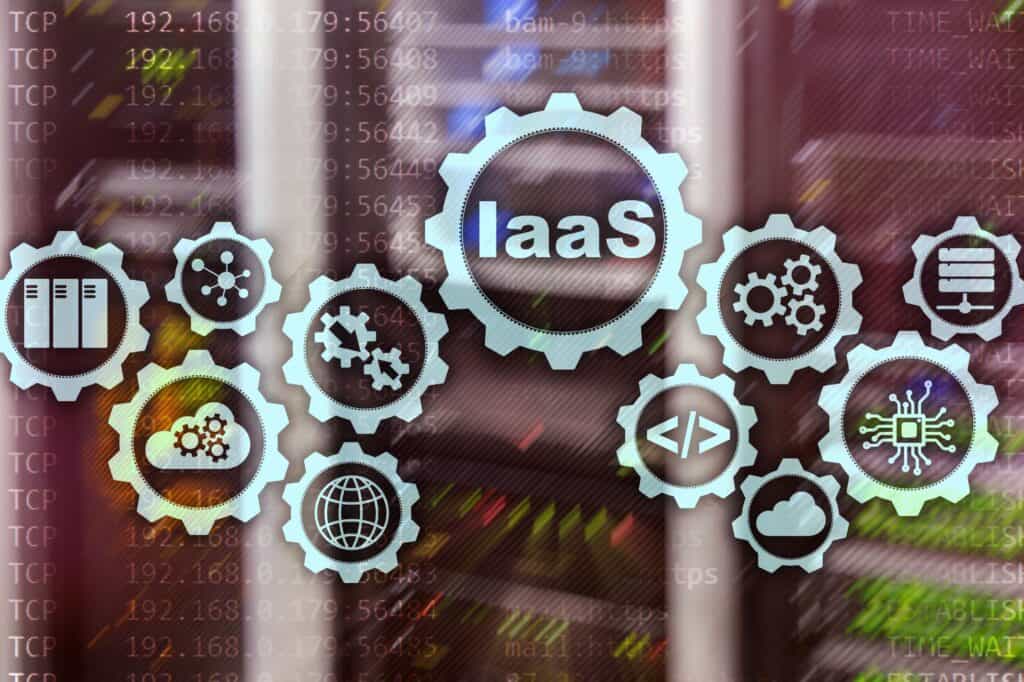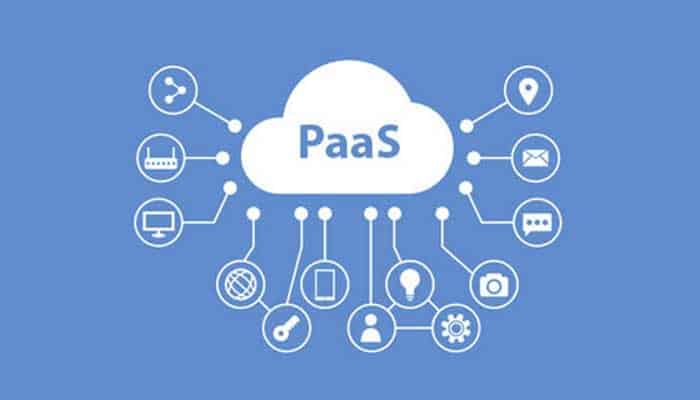Com a crescente popularidade da computação e dos serviços em nuvem, as empresas em todo o mundo estão se afastando dos serviços tradicionais no local nos quais passaram a confiar.
Os serviços baseados em nuvem transformaram a forma como as empresas trabalhavam, permitindo-lhes usar infraestruturas de TI, plataformas, software e aplicativos via Internet e hotspots online.
Para organizações que estão pensando em migrar seus negócios de comércio eletrônico para a nuvem, há três termos importantes a serem observados:
-
Software como Serviço (SaaS).
-
Plataforma como Serviço (PaaS);
-
Infraestrutura como Serviço (IaaS);

Cada modelo de serviço em nuvem fornece um nível diferente de controle, com vários níveis de responsabilidade para você. Em uma solução SaaS, o provedor vai gerenciar tudo, e você pode alterar algumas configurações. Já Com o IaaS, você tem controle total porque aluga da infraestrutura. Com as soluções de PaaS, você controla os dados e o aplicativo, enquanto o provedor de serviços gerencia o restante da pilha.
Essas plataformas cresceram significativamente na última década, com sua receita mundial aumentando de cerca de US$ 90 bilhões em 2016 para mais de US$ 312 bilhões em 2020.
Com um crescimento como esse, a computação em nuvem está rapidamente tomando conta do mercado e, pensando nisso preparamos este artigo para que você entenda detalhadamente a diferença entre os modelos de serviço.
SaaS (Software como Serviço)

Software as a Service, também conhecido como serviços de aplicativos em nuvem, é opção mais utilizada para empresas no mercado de nuvem.
O SaaS utiliza a internet na entrega de aplicativos, que são gerenciados por um fornecedor terceirizado, aos seus usuários. Grande parte dos aplicativos SaaS é executada por meio de seu navegador da web, portanto, eles não exigem nenhum download ou instalação no lado do cliente.
Com o SaaS, os fornecedores podem gerenciar todos os problemas técnicos potenciais, como dados, middleware, servidores e armazenamento, resultando em manutenção e suporte simplificados para os negócios.
Vantagens do SaaS
A maior vantagem de produtos SaaS é a facilidade de uso e configuração. Como os produtos SaaS são baseados em nuvem, tudo o que você precisa fazer para começar a acessar os aplicativos é simplesmente do login.
Os benefícios adicionais incluem:
- Você não tem a necessidade de gerenciar ou atualizar o software. Isso normalmente está incluído em uma assinatura ou compra de SaaS;
- Ele não usará seus recursos locais, como espaço em seu servidor físico;
- É muito fácil encontrar e comprar um produto SaaS;
- O TI de sua empresa não terá que se preocupar com a manutenção de um produto SaaS.
Desvantagens do SaaS
A facilidade de uso das ferramentas SaaS traz uma desvantagem significativa: Quando você utiliza um produto SaaS, você não tem controle sobre o uso e consumo de subscrições SaaS por toda empresa, podendo usuários ter se inscrito em SaaS não homologados pela empresa, gerando riscos de segurança e aumento de custos.
Mais algumas desvantagens incluem:
- As ferramentas SaaS podem não ser compatíveis com outras ferramentas e hardwares que já estão em uso em sua empresa;
- As integrações geralmente dependem do provedor, com isso, é impossível “patch” uma integração do seu lado;
- Você está à mercê das medidas de segurança da empresa SaaS – Caso ocorra um vazamento, todos os seus dados poderão ser expostos.
Exemplos de SaaS
Existem muitos exemplos de SaaS no mercado, cada um oferecendo um tipo de serviço dentro dessa modalidade. Listamos alguns abaixo:
IaaS (Infraestrutura como Serviço)

A infraestrutura como serviço (IaaS) é um serviço de computação em nuvem que oferece recursos de computação, rede e armazenamento sob demanda, geralmente com pagamento conforme o uso.
As empresas podem comprar recursos sob demanda e conforme necessário, em vez de ter que comprar o hardware diretamente.
Por mais que a IaaS ofereça recursos virtualizados, como servidores, redes, discos e endereços IP, você ainda precisa administrar o sistema operacional, dados, middleware, aplicativos e tempos de execução. Um painel ou uma API oferece controle total sobre toda a infraestrutura.
Com a IaaS você tem a flexibilidade de comprar apenas a computação de que você precisa e dimensioná-la para cima ou para baixo como necessário. Se você deseja migrar um aplicativo como está de um data center local para a nuvem, escolha o modelo IaaS. Você poderá prosseguir com a migração com alterações mínimas.
Por conta da sua velocidade de implantação, o IaaS é uma maneira rápida e flexível de criar e desativar ambientes de teste e desenvolvimento.
Vantagens de IaaS
A infraestrutura de nuvem IaaS oferece um maior nível de controle e poder sobre software e hardware. Outros benefícios incluem:
- Por seu modelo de pagamento ser conforme o uso, permite que as empresas paguem apenas pelos recursos que usam;
- As organizações têm total controle sobre sua infraestrutura;
- Pode ser dimensionado ou reduzido de acordo com a necessidade;
- Não existe necessidade de comprar um servidor físico ou mantê-lo.
Desvantagem de IaaS
A grande desvantagem de uma ferramenta IaaS é que você ainda é responsável por ser “tecnologicamente” seguro. Além disso:
- Você precisa garantir a funcionalidade correta de seus aplicativos e sistemas operacionais;
- A responsabilidade dos dados é sua, se algum deles for perdido, cabe a você recuperá-lo;
- As empresas de IaaS fornecem apenas os servidores e sua API, e todo o restante deve ser configurado por você.
Exemplos de IaaS
- Amazon Web Services (AWS);
- IBM Cloud;
- Microsoft Azure;
- Rackspace;
- Linode;
- Cisco Metacloud;
- Digital Ocean;
- Vultr;
- Oracle Cloud.
PaaS (Plataforma como Serviço)

PaaS, ou Platform as a Service, é um modelo onde se usa de uma plataforma para desenvolvimento, testes, execução e atualização de aplicativos. Basicamente, o usuário ganha um ambiente com soluções dentro da computação em nuvem.
As tecnologias da plataforma permitem criar software mais facilmente, sendo possível vários usuários trabalharem na mesma aplicação simultaneamente. A interface dos serviços de nuvem aqui é bem intuitiva.
Vantagens de PaaS
Os desenvolvedores usam PaaS porque além de ser econômico, permite a colaboração fácil para uma equipe inteira. Considere criar um aplicativo em sua unidade local e, em seguida, tentar implantá-lo online, isso é difícil e pode exigir muitas etapas.
Com um PaaS, os desenvolvedores criam seu aplicativo na plataforma e o implantam imediatamente. Além disso podemos citar como outros benefícios:
- As ferramentas PaaS são fáceis de usar e se inscrever;
- Os desenvolvedores podem facilmente atualizar e personalizar aplicativos sem pensar em manutenção do software no back-end. Basta codificar e ir;
- Se o aplicativo crescer em adoção e uso, as plataformas PaaS oferecem grande escalabilidade e flexibilidade.
Desvantagem de PaaS
A desvantagem mais significativa do PaaS é que você só consegue controlar o que é construído na plataforma. Caso haja uma interrupção ou problema com o sistema operacional ou hardware, o software sairá com ele. Outras desvantagens incluem:
- Você tem controle somente sobre o código do aplicativo e não sobre a infraestrutura por trás dele. Portanto é indicado apenas para pequenas e médias empresas;
- A organização PaaS armazena seus dados, e isso pode representar um risco de segurança para os usuários do seu aplicativo;
- Os termos de serviço de PaaS podem deixar as personalizações limitadas.
Exemplos de PaaS
- Google App Engine;
- Heroku;
- Force.com;
- AWS Elastic Beanstalk;
- Apache Stratos;
- Magento Commerce;
- AWS Lambda;
- SAP Cloud.
IaaS vs PaaS vs SaaS: qual serviço de nuvem é adequado para você?
É hora de escolher qual serviço baseado em nuvem você precisa. Na verdade, a escolha depende diretamente dos objetivos do seu negócio, então, antes de tudo, considere o que sua empresa precisa. Listamos aqui algumas necessidades comuns de negócios que podem ser facilmente com o serviço de nuvem apropriado:
- Se você deseja recursos prontos para uso, sem o incômodo de instalações, o SaaS pode ser a melhor opção para você;
- Se sua empresa precisar criar produtos de software, PaaS pode ser a melhor opção para você;
- Se o seu negócio precisa de uma máquina virtual, IaaS pode ser sua melhor opção.
Agora que você já conhece todas as características dos principais serviços em nuvem, é hora de colocar em prática e escolher a melhor solução para sua empresa, mas se você ainda tiver alguma dúvida estamos à disposição para te ajudar.
Tags: ServiceNow, Snow Software, Gestão de Ativos de Software, Software Asset Management, SAM, FINOps, ITAM, ITSM, Flexera, Cloud Management framework de governança, iaas paas, nuvem híbrida, google cloud, red hat, paas fornece, modelos de cloud computing, tecnologia em nuvem, entenda as diferenças, red hat openshift, modelos de computação, bancos de dados, licenças de softwares, ouvido falar, trabalhe conosco, pequenas empresas, segurança em nuvem, principais características, loja virtual, diferenças entre iaas paas, nuvem privada, saas entenda, segurança da informação, google cloud platform, fale conosco, modelo de nuvem, cloud platform, diferença entre iaas, google workspace, precisam se preocupar, infraestrutura em nuvem, segurança digital, iaas saas, nuvem pública, criarem aplicações, vs paas, paas vs, plataforma como serviço paas, recursos de computação, google app engine, exemplos de paas, aplicação em nuvem, software como serviço saas, microsoft azure, app engine, saas paas, vs paas vs, infraestrutura de ti, sistemas operacionais, iaas vs paas, google compute engine, transformação digital, servidores armazenamento, ambientes de desenvolvimento, empresas não precisam, painel de controle, deixe um comentário, ambiente de execução, criar um ambiente, estruturas físicas, gerenciamento de dados, principais vantagens, armazenar gerenciar, receber nossos conteúdos, precisar investir, processamento em lote, paas platform, iaas infrastructure, ti gerenciados, modelo ideal, equipe de vendas, sql server, materiais gratuitos, máquinas virtuais, armazenamento de dados, faça uma avaliação, plataforma de desenvolvimento, baseados na nuvem, gerenciem aplicativos, empresa utiliza, provedores de nuvem, executar aplicativos, diferenças entre iaas paas, modelo de nuvem, nuvem privada, nuvem híbrida, nuvem pública, google workspace, médias empresas, aplicativos saas, precisam se preocupar, tecnologia em nuvem, infraestrutura em nuvem, saas entenda, saas software

